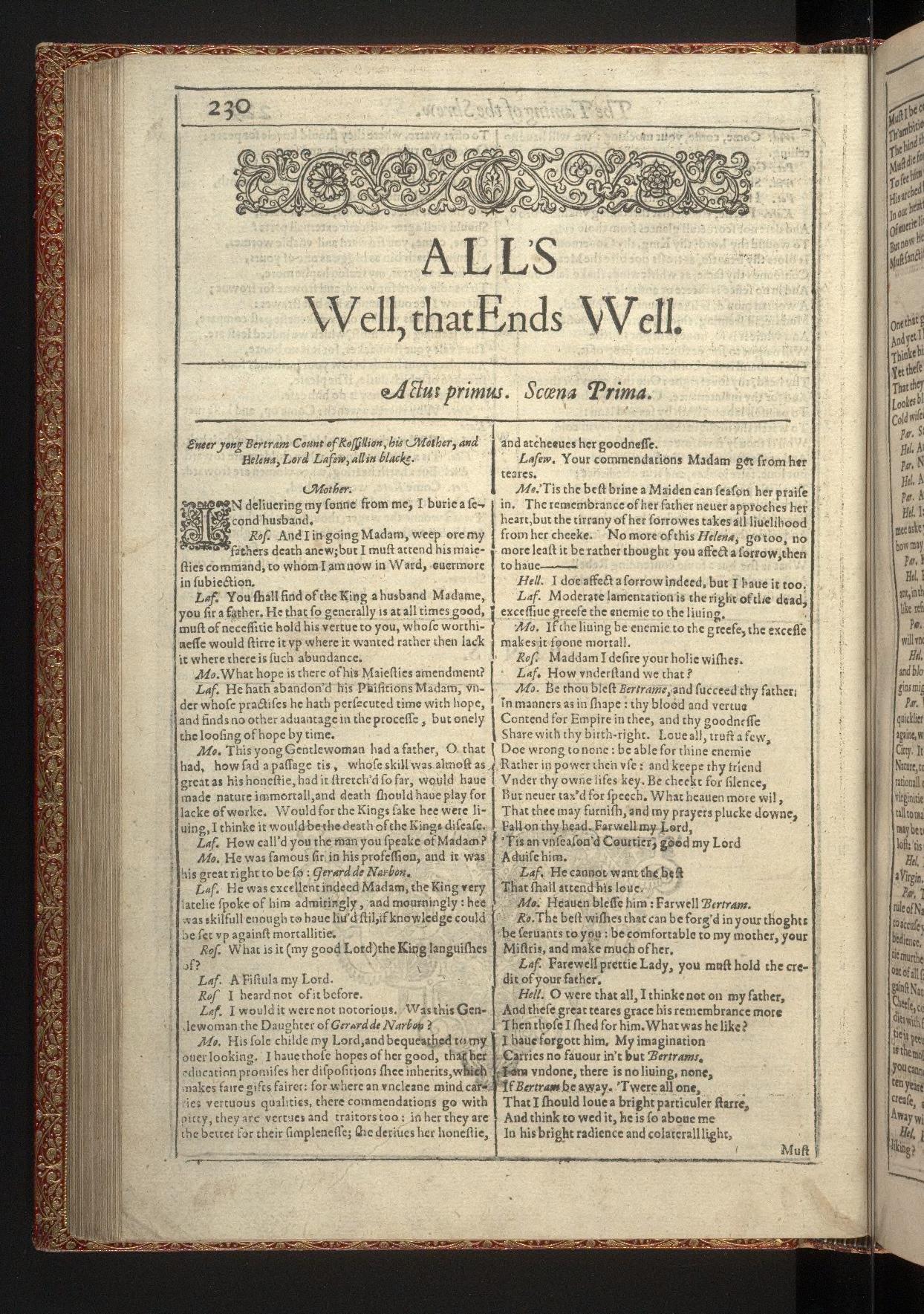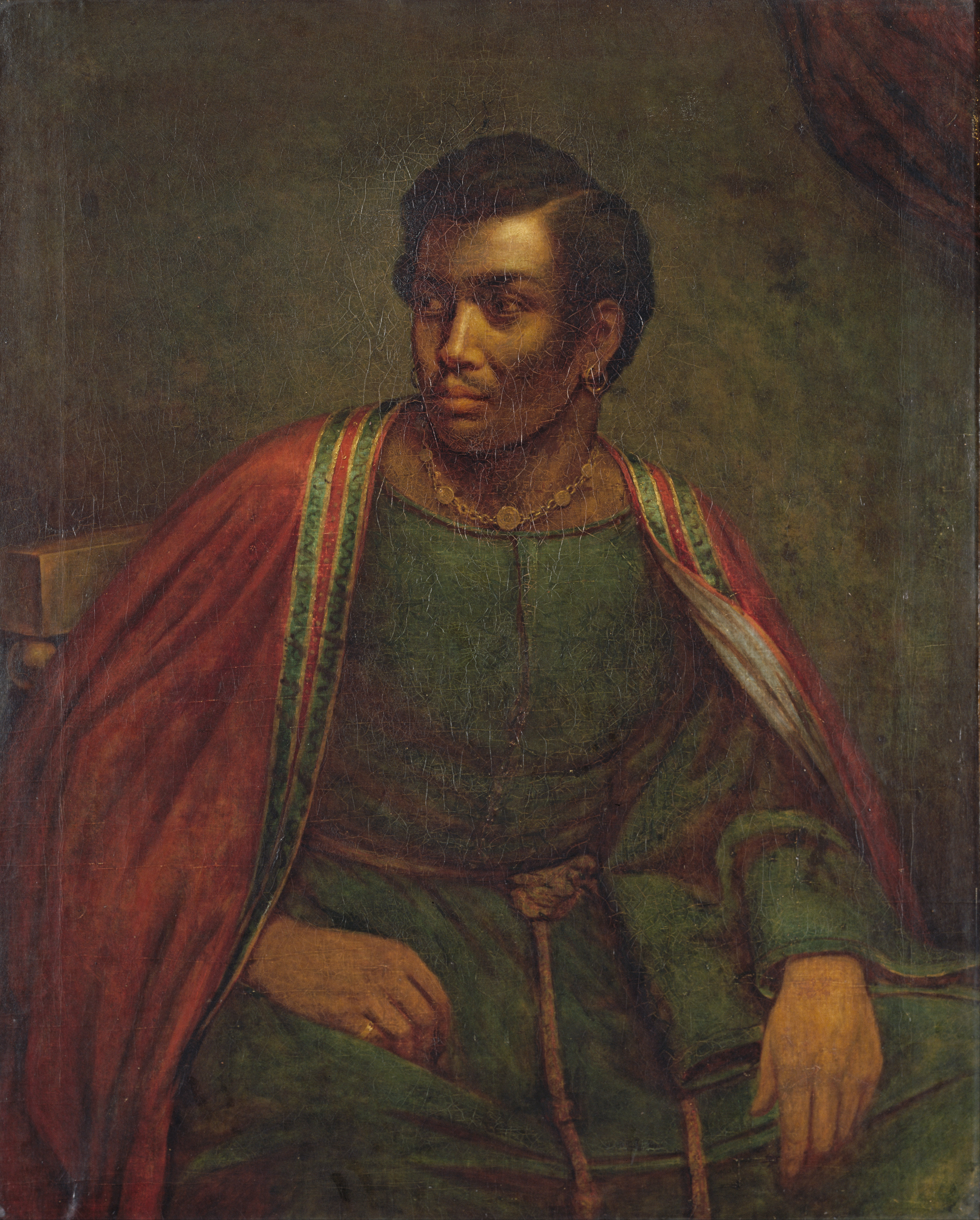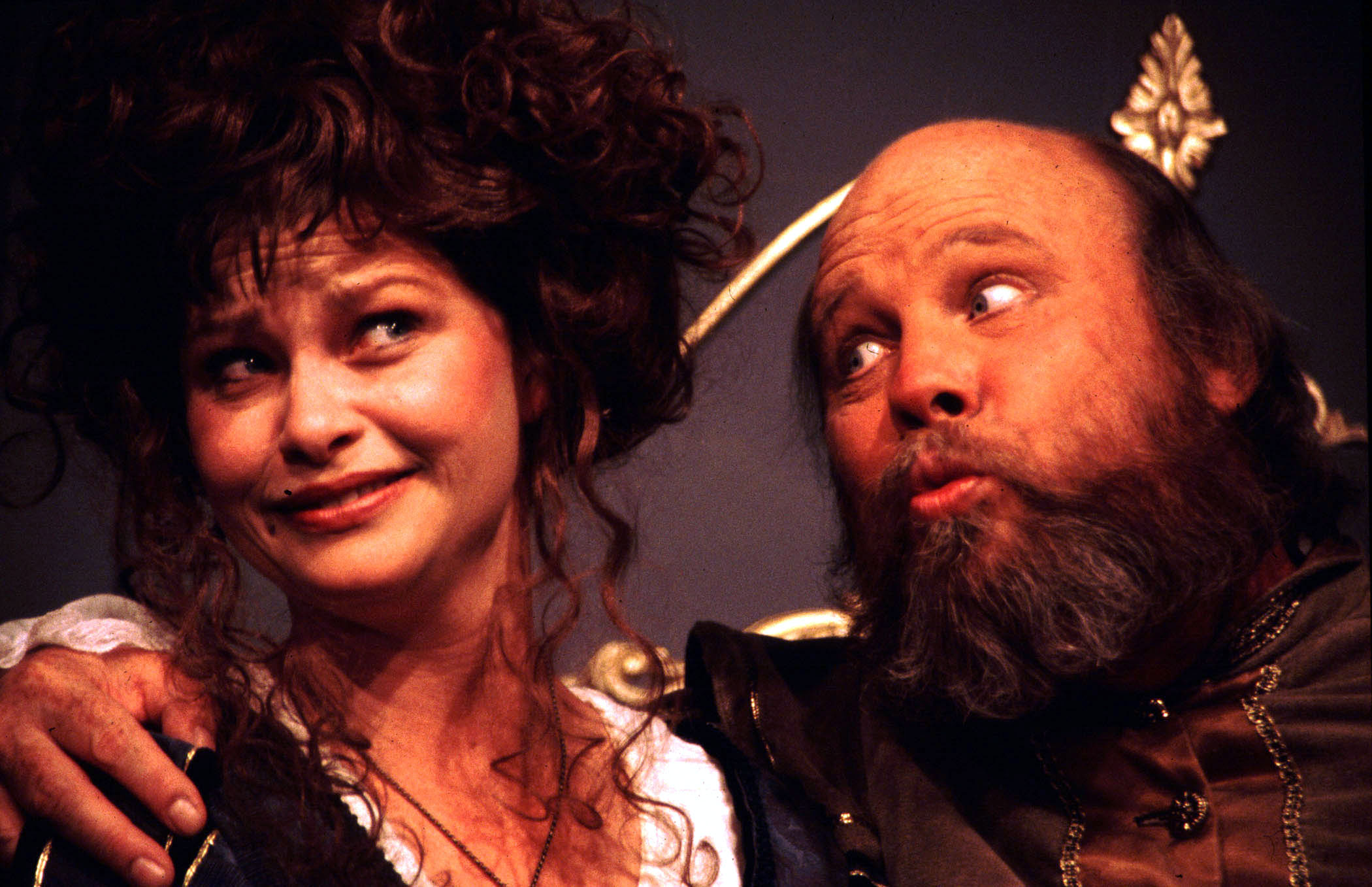|
Brewster Mason
Brewster Mason (30 August 192214 August 1987) was an English stage actor who also appeared in films and on television. He was born in Kidsgrove, Staffordshire and made his stage debut at the Finsbury Park Open Air Theatre in 1947. He then appeared on stage in repertory theatre, in London's West End and on Broadway. He was a member of the Royal Shakespeare Company between 1963 and 1987, and his parts included Earl of Warwick in ''The Wars of The Roses'' (1963 and 1964), Claudius in ''Hamlet'' opposite David Warner's portrayal of the title character (1965 and 1966), Sir Toby Belch in ''Twelfth Night'' (1966), Lafau (in ''All's Well That Ends Well'') and Banquo (in ''Macbeth'') in 1967, ''Julius Caesar'' and Falstaff (in ''The Merry Wives of Windsor'') in 1968, ''Women Beware Women'', Wolsey (in ''Henry VIII'') and Falstaff (in ''When Thou Art King'') in 1969, Undershaft in ''Major Barbara'' (1970), ''Othello'' (1971), Falstaff in '' Henry IV'' (1975) and Gaunt in ''Richard II'' in ... [...More Info...] [...Related Items...] OR: [Wikipedia] [Google] [Baidu] |
Kidsgrove
Kidsgrove is a town in the borough of Newcastle-under-Lyme, Staffordshire, England, on the Cheshire border. It is part of the Potteries Urban Area, along with Stoke-on-Trent and Newcastle-under-Lyme. It has a population of 26,276 (2019 census). Most of the town is in the Kidsgrove ward, whilst the western part is in Ravenscliffe. History From the 18th century, Kidsgrove grew around coal mining, although the pits have now closed. Clough Hall Mansion in the town is now demolished. The engineer James Brindley cut the first Harecastle Tunnel on the Trent and Mersey Canal near the town; Thomas Telford cut the second. Kidsgrove also marks the southern extremity of the Macclesfield Canal. There is a legend regarding a headless ghost that is said to haunt the Harecastle Tunnel. The ghost is said to be that of a young woman who was murdered inside the tunnel. She is referred to as the ''"Kidsgrove Boggart"''. R.J. Mitchell, the designer of the Spitfire fighter aircraft, was born in ... [...More Info...] [...Related Items...] OR: [Wikipedia] [Google] [Baidu] |
All's Well That Ends Well
''All's Well That Ends Well'' is a play by William Shakespeare, published in the ''First Folio'' in 1623, where it is listed among the comedies. There is a debate regarding the dating of the composition of the play, with possible dates ranging from 1598 to 1608. also aCentre for Early Modern Studies, University of Oxford accessed 22 April 2012: "The recent redating of All’s Well from 1602–03 to 1606–07 (or later) has gone some way to resolving some of the play’s stylistic anomalies" ... " ylistically it is striking how many of the widely acknowledged textual and tonal problems of All’s Well can be understood differently when we postulate dual authorship." Bertram is compelled to marry Helena. Bertram refuses to consummate their marriage. He goes to Italy. In Italy he courts Diana. Helena meets Diana. They perform the bed trick. The play is considered one of Shakespeare's " problem plays", a play that poses complex ethical dilemmas that require more than typically si ... [...More Info...] [...Related Items...] OR: [Wikipedia] [Google] [Baidu] |
The Affair (play)
''The Affair'' is a 1962 play by Ronald Millar based on the novel by C. P. Snow. This novel was also adapted for Australian TV in 1965. Synopsis A group of professors at Cambridge University try to hire an old colleague back even though they all don't like him, they all agree he was dismissed unfairly. Productions The original production premiered on September 20, 1962 at Henry Miller Theatre and closed after 116 performances on December 29, 1962. The show was directed by John Fernald, scenery and lighting design by Eldon Elder, and costume design by Ramse Mostoller. The cast starred Kynaston Reeves (Thomas Crawford), Christopher Hewett (Tom Orbell), Brewster Mason (Sir Lewis Eliot), Brenda Vaccaro (Laura Howard), Kenneth Mars (Martin Eliot), Francis Compton (G.H. Winslow), Edward Atienza (M. H. L. Gay), Donald Moffat (Julian Skeffington), Geoffrey Lumsden (Sir Francis Getliffe), Edgar Daniels (Arthur Brown), Patrick Waddington (Alec Nightingale), Elizabeth Hubbard (Margare ... [...More Info...] [...Related Items...] OR: [Wikipedia] [Google] [Baidu] |
Richard II (play)
''The Life and Death of King Richard the Second'', commonly called ''Richard II'', is a history play by William Shakespeare believed to have been written around 1595. It is based on the life of King Richard II of England (ruled 1377–1399) and chronicles his downfall and the machinations of his nobles. It is the first part of a tetralogy, referred to by some scholars as the Henriad, followed by three plays about Richard's successors: ''Henry IV, Part 1''; '' Henry IV, Part 2''; and ''Henry V''. Although the First Folio (1623) includes the play among the histories, the earlier Quarto edition of 1597 calls it ''The tragedie of King Richard the second''. Characters * King Richard II * John of Gaunt, Duke of Lancaster – Richard's uncle * Duke of York – Richard's uncle * Duke of Aumerle – York's son * Thomas Mowbray, Duke of Norfolk * Queen – Richard's wife (an unnamed composite of his first wife, Anne of Bohemia, and his second, Isabella of Valois, who was still a chil ... [...More Info...] [...Related Items...] OR: [Wikipedia] [Google] [Baidu] |
Henry IV, Part 1
''Henry IV, Part 1'' (often written as ''1 Henry IV'') is a history play by William Shakespeare, believed to have been written no later than 1597. The play dramatises part of the reign of King Henry IV of England, beginning with the battle at Homildon Hill late in 1402, and ending with King Henry's victory in the Battle of Shrewsbury in mid-1403. In parallel to the political conflict between King Henry and a rebellious faction of nobles, the play depicts the escapades of King Henry's son, Prince Hal (the future King Henry V), and his eventual return to court and favour. ''Henry IV, Part 1'' is the first of Shakespeare's two plays which deal with the reign of Henry IV (the other being '' Henry IV, Part 2''), and the second play in the Henriad, a modern designation for the tetralogy of plays that deal with the successive reigns of Richard II, Henry IV, and Henry V. From its first performance on, it has been an extremely popular work both with the public and critics. Characte ... [...More Info...] [...Related Items...] OR: [Wikipedia] [Google] [Baidu] |
Othello
''Othello'' (full title: ''The Tragedy of Othello, the Moor of Venice'') is a tragedy written by William Shakespeare, probably in 1603, set in the contemporary Ottoman–Venetian War (1570–1573) fought for the control of the Island of Cyprus, a possession of the Venetian Republic since 1489. The port city of Famagusta finally fell to the Ottomans in 1571 after a protracted siege. The story revolves around two characters, Othello and Iago. Othello is a Moorish military commander who was serving as a general of the Venetian army in defence of Cyprus against invasion by Ottoman Turks. He has recently married Desdemona, a beautiful and wealthy Venetian lady much younger than himself, against the wishes of her father. Iago is Othello's malevolent ensign, who maliciously stokes his master's jealousy until the usually stoic Moor kills his beloved wife in a fit of blind rage. Due to its enduring themes of passion, jealousy, and race, ''Othello'' is still topical and popular and is ... [...More Info...] [...Related Items...] OR: [Wikipedia] [Google] [Baidu] |
Major Barbara
''Major Barbara'' is a three-act English play by George Bernard Shaw, written and premiered in 1905 and first published in 1907. The story concerns an idealistic young woman, Barbara Undershaft, who is engaged in helping the poor as a Major in the Salvation Army in London. For many years, Barbara and her siblings have been estranged from their father, Andrew Undershaft, who now reappears as a rich and successful munitions maker. The father gives money to the Salvation Army, which offends Barbara because she considers it "tainted" wealth. The father argues that poverty is a worse problem than munitions and claims that he is doing more to help society by giving his workers jobs and a steady income than she is doing by giving people free meals in a soup kitchen. The play script displays typical Shavian techniques in the omission of apostrophes from contractions and other punctuation, the inclusion of a didactic introductory essay explaining the play's themes, and the phonetic spel ... [...More Info...] [...Related Items...] OR: [Wikipedia] [Google] [Baidu] |
Henry VIII (play)
''Henry VIII'' is a collaborative history play, written by William Shakespeare and John Fletcher, based on the life of Henry VIII. An alternative title, , is recorded in contemporary documents, with the title not appearing until the play's publication in the First Folio of 1623. Stylistic evidence indicates that individual scenes were written by either Shakespeare or his collaborator and successor, John Fletcher. It is also somewhat characteristic of the late romances in its structure. It is noted for having more stage directions than any of Shakespeare's other plays. During a performance of ''Henry VIII'' at the Globe Theatre in 1613, a cannon shot employed for special effects ignited the theatre's thatched roof (and the beams), burning the original Globe building to the ground. Characters * Prologue/Epilogue * Henry VIII – King of England * Cardinal Wolsey – Archbishop of York and Lord Chancellor; initially, Henry's chief adviser * Queen Katherine – later d ... [...More Info...] [...Related Items...] OR: [Wikipedia] [Google] [Baidu] |
Thomas Wolsey
Thomas Wolsey ( – 29 November 1530) was an English statesman and Catholic bishop. When Henry VIII became King of England in 1509, Wolsey became the king's almoner. Wolsey's affairs prospered and by 1514 he had become the controlling figure in virtually all matters of state. He also held important ecclesiastical appointments. These included the Archbishopric of York—the second most important role in the English church—and that of papal legate. His appointment as a cardinal by Pope Leo X in 1515 gave him precedence over all other English clergy. The highest political position Wolsey attained was Lord Chancellor, the king's chief adviser (formally, as his successor and disciple Thomas Cromwell was not). In that position, he enjoyed great freedom and was often depicted as an ''alter rex'' ("other king"). After failing to negotiate an annulment of Henry's marriage to Catherine of Aragon, Wolsey fell out of favour and was stripped of his government titles. He retreated to ... [...More Info...] [...Related Items...] OR: [Wikipedia] [Google] [Baidu] |
Women Beware Women
''Women Beware Women'' is a Jacobean tragedy written by Thomas Middleton, and first published in 1657. Date The date of authorship of the play is deeply uncertain. Scholars have estimated its origin anywhere from 1612 to 1627; 1623–24 has been plausibly suggested. The play was entered into the Stationers' Register on 9 September 1653 by the bookseller Humphrey Moseley, along with two other Middleton plays, ''More Dissemblers Besides Women'' and ''No Wit, No Help Like a Woman's''. In 1657 Moseley published ''Women Beware Women'' together with ''More Dissemblers'' in an octavo volume titled ''Two New Plays''. Both the Register entry and the first edition's title page assign ''Women Beware Women'' to Middleton—an attribution which has never been seriously questioned and which is accepted by the scholarly consensus. No performances of the play in its own era are known. The octavo text of the play is prefaced by a commendatory poem by Nathaniel Richards, author of ''The Tragedy ... [...More Info...] [...Related Items...] OR: [Wikipedia] [Google] [Baidu] |
The Merry Wives Of Windsor
''The Merry Wives of Windsor'' or ''Sir John Falstaff and the Merry Wives of Windsor'' is a comedy by William Shakespeare first published in 1602, though believed to have been written in or before 1597. The Windsor of the play's title is a reference to the town of Windsor, also the location of Windsor Castle, in Berkshire, England. Though nominally set in the reign of Henry IV or early in the reign of Henry V, the play makes no pretence to exist outside contemporary Elizabethan-era English middle-class life. It features the character Sir John Falstaff, the fat knight who had previously been featured in ''Henry IV, Part 1'' and '' Part 2''. It has been adapted for the opera at least ten times. The play is one of Shakespeare's lesser-regarded works among literary critics. Tradition has it that ''The Merry Wives of Windsor'' was written at the request of Queen Elizabeth I. After watching ''Henry IV Part I'', she asked Shakespeare to write a play depicting Falstaff in love. Char ... [...More Info...] [...Related Items...] OR: [Wikipedia] [Google] [Baidu] |
Falstaff
Sir John Falstaff is a fictional character who appears in three plays by William Shakespeare and is eulogised in a fourth. His significance as a fully developed character is primarily formed in the plays '' Henry IV, Part 1'' and '' Part 2'', where he is a companion to Prince Hal, the future King Henry V of England. Falstaff is also featured as the buffoonish suitor of two married women in '' The Merry Wives of Windsor''. Though primarily a comic figure, Falstaff embodies a depth common to Shakespeare's major characters. A fat, vain, and boastful knight, he spends most of his time drinking at the Boar's Head Inn with petty criminals, living on stolen or borrowed money. Falstaff leads the apparently wayward Prince Hal into trouble, and is ultimately repudiated after Hal becomes king. Falstaff has since appeared in other media, including operas by Giuseppe Verdi, Ralph Vaughan Williams, and Otto Nicolai, and in Orson Welles' 1966 film ''Chimes at Midnight''. The operas focus ... [...More Info...] [...Related Items...] OR: [Wikipedia] [Google] [Baidu] |


_Sir_John_Soane’s_Museum.jpg)





